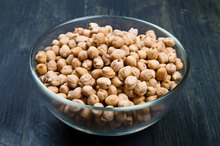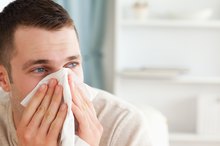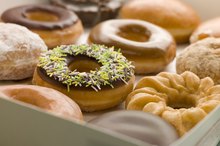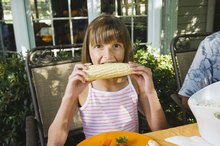A List of Foods That Can Be Eaten Before a PET Scan
Positron emission tomography, or a PET scan, is a type of nuclear medicine imaging that views the body and organs on a cellular level, according to RadiologyInfo.org. A PET scan measures body functions like blood flow, oxygen use and the metabolism of glucose, or sugar. Depending on the type of PET scan you have, following a low-carbohydrate diet 12 hours before the scan may be necessary to increase the quality of PET scan images. Foods you can eat are limited for this type of PET scan.
Meats
Begin your low-carbohydrate diet 12 hours before your scheduled PET scan unless otherwise instructed by your physician, suggests Cedars-Sinai Medical Center. All meats are allowed prior to a PET scan, including beef, chicken, pork and fish. Choose fresh, unbreaded meats to avoid carbohydrates. Bake, broil or grill meats and fish and do not add batter or breading. Tofu may also be eaten prior to a PET scan.
- Begin your low-carbohydrate diet 12 hours before your scheduled PET scan unless otherwise instructed by your physician, suggests Cedars-Sinai Medical Center.
- All meats are allowed prior to a PET scan, including beef, chicken, pork and fish.
Dairy
Symptoms of Allergies to Chickpeas and Soy
Learn More
Fresh cheeses are high in protein and low in carbohydrates. You may choose hard cheeses, such as block cheese in cheddar, Swiss, Colby or a preferred variety. Cottage cheese is also acceptable. Margarine or butter may be used to flavor vegetables; however, refrain from spreads like cream cheese or cheese spread. Hard-boiled or prepared, plain eggs may also be eaten prior to a PET scan. Refrain from dairy products that contain sugar, like ice cream or yogurt.
- Fresh cheeses are high in protein and low in carbohydrates.
- You may choose hard cheeses, such as block cheese in cheddar, Swiss, Colby or a preferred variety.
Vegetables
Non-starch vegetables are low in carbohydrates. Choose vegetables like broccoli, spinach or green beans, suggests Cedars-Sinai Medical Center. Lettuce greens, asparagus and mushrooms are also allowed. Avoid potatoes of all varieties, as well as corn, carrots, beets and peas, as these contain starch, notes the Radiology Corporation of America.
.
- Non-starch vegetables are low in carbohydrates.
- Choose vegetables like broccoli, spinach or green beans, suggests Cedars-Sinai Medical Center.
Related Articles
References
- Radiology Corporation of America: Services: Overview
- Van den wyngaert T, Strobel K, Kampen WU, et al. The EANM practice guidelines for bone scintigraphy. Eur J Nucl Med Mol Imaging. 2016;43(9):1723-38. doi:10.1007/s00259-016-3415-4.
- Hahn S, Heusner T, Kümmel S, et al. Comparison of FDG-PET/CT and bone scintigraphy for detection of bone metastases in breast cancer. Acta Radiol. 2011;52(9):1009-14. doi:10.1258/ar.2011.100507.
- Ohta M, Tokuda Y, Suzuki Y, et al. Whole body PET for the evaluation of bony metastases in patients with breast cancer: comparison with 99Tcm-MDP bone scintigraphy. Nucl Med Commun. 2001;22(8):875-9. doi:10.1097/00006231-200108000-00005.
- Cunha JP. Myoview side effects. Updated August 29, 2019.
- National Library of Medicine. Technetium Tc 99m Bicisate. 2006.
- RadiologiyInfo.org. Bone scan (skeletal scintigraphy). Updated March 1, 2018.
- Brenner, A.; Koshy, J.; Morey, J. et al. The Bone Scan. Sem Nuclear Med. 2012;42(1):11-26. DOI: 10.1053/j.semnuclmed.2011.07.005.
- Tateishi, U.; Gamez, C.; Dawood, S. et al. Bone metastases in patients with metastatic breast cancer: morphologic and metabolic monitoring of response to systemic therapy with integrated PET/CT. Radiology. 2008;247:189-96. DOI: 10.1148/radiol.2471070567.
- U.S. Food and Drug Administration. Highlights of Prescribing Information: Technetium Tc 99m Sulfur Colloid Injection. Silver Spring, Maryland; updated July 2011.
- Wyngaeart, T.; Strobel, K.; Kampen, W. et al. The EANM practice guidelines for bone scintigraphy. Eur J Nucl Med Mol Imaging. 2016;43:1723-38. DOI: 10.1007/s00259-016-3415-4.
Writer Bio
Elizabeth Otto has been writing professionally since 2003. She is a licensed emergency medical technician-intermediate with over 10 years of experience in the field. She has worked as a clinical assistant in family health and emergency medicine since 1995. Otto is a freelance writer for various websites and holds an Associate of Science in medical assisting from Commonwealth College.









